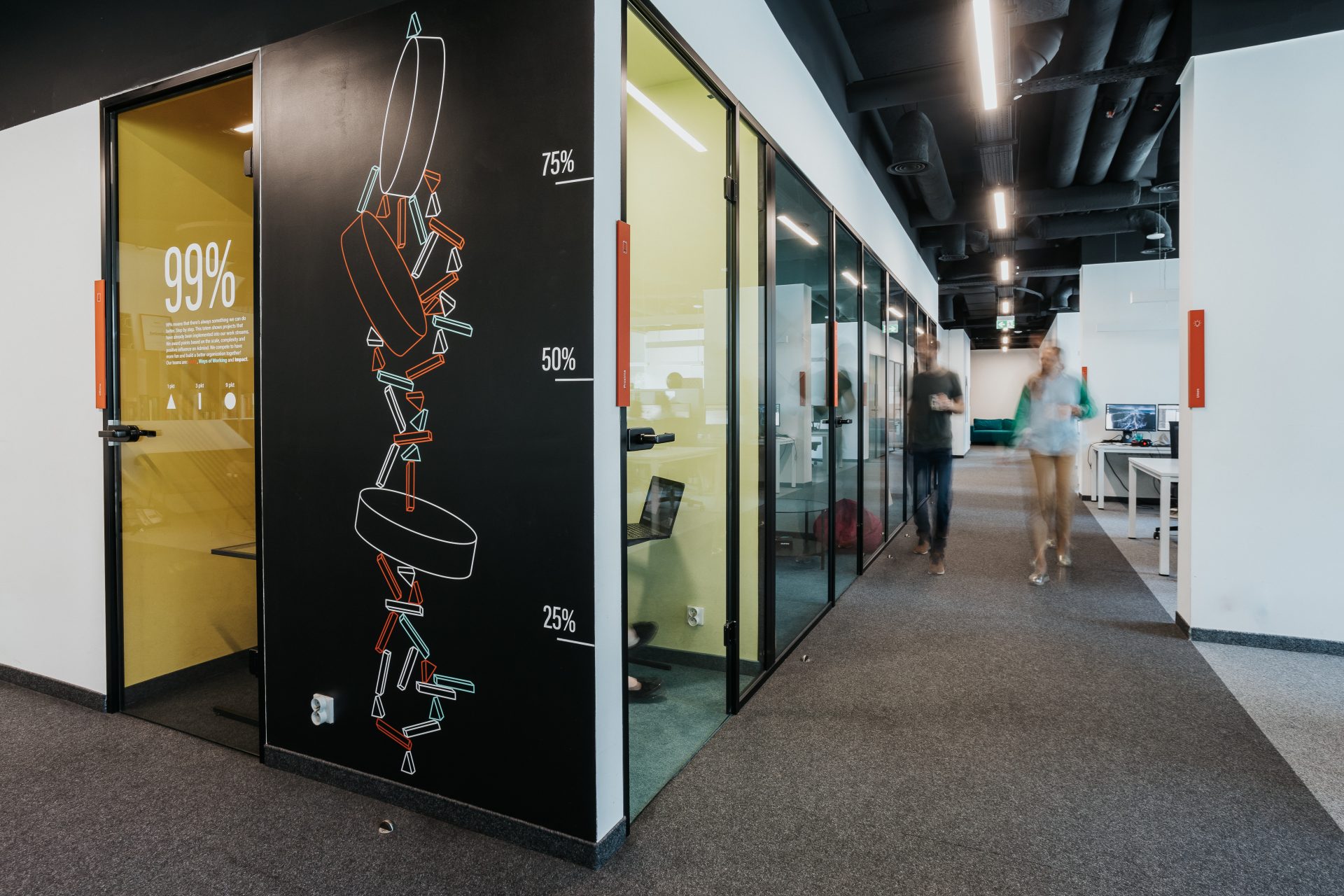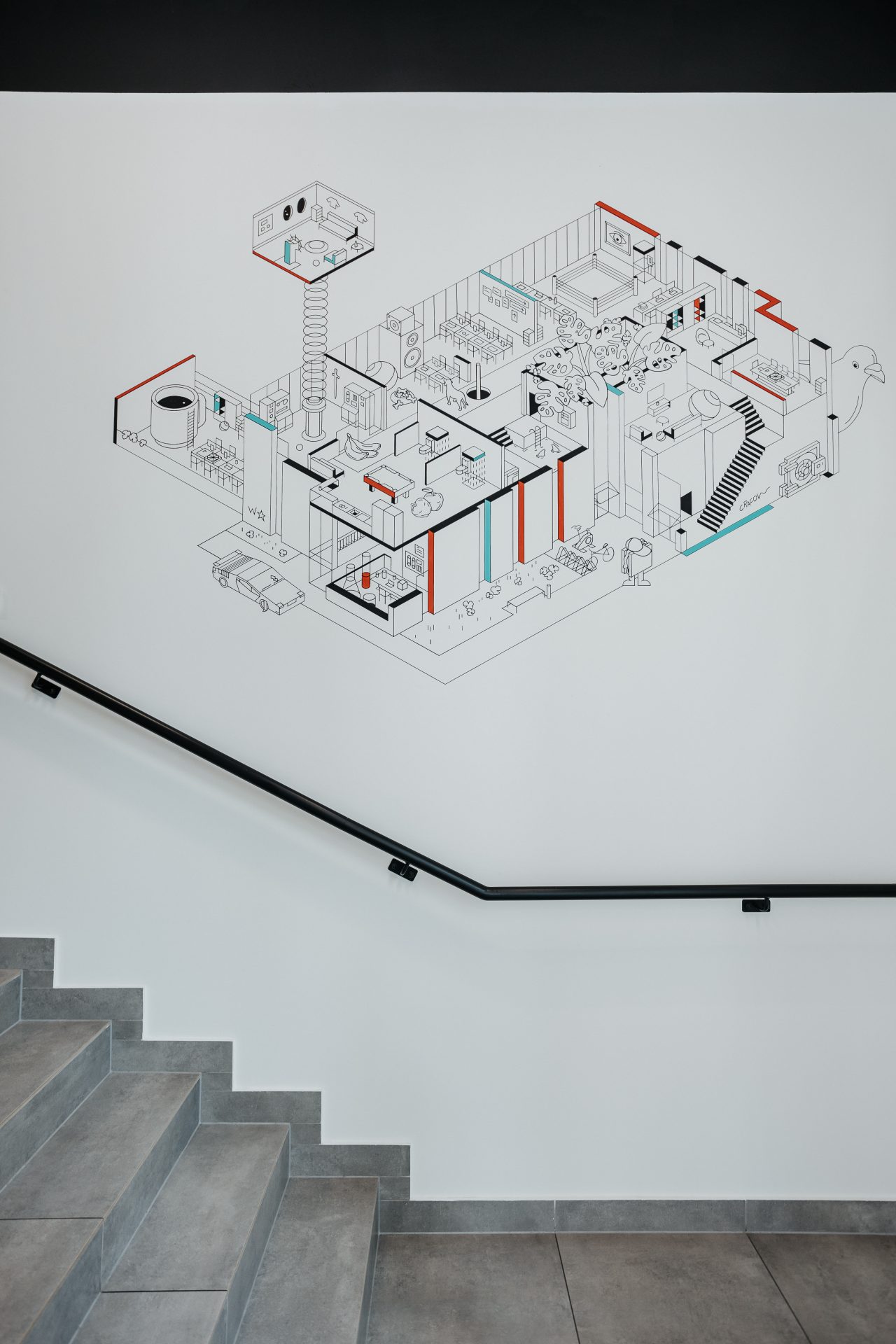Introduction
Years ago, a marketing guru said that good branding is a process that makes us think about a brand even when it’s not in sight—when we don’t see its logo or name. The same can be said about an effective wayfinding system. Well-designed signage intuitively and effortlessly guides us through spaces, preventing confusion and information overload.
Creating such systems is both an art and a challenge—not only for those managing a space but also for architects and designers. In this article, we will explore the challenges faced by designers, who approach these projects from a unique perspective.
What is wayfinding?
Let’s start with the basics. Just like branding, wayfinding has multiple definitions. At its core, it is the art of integrating verbal and visual elements into a cohesive system that eliminates uncertainty about one’s location.
Wayfinding encompasses physical space, maps, directional cues, architecture, landscape design, symbols, colours, and logos. More than just a navigation tool, it shapes how users perceive their surroundings.
When users feel oriented and comfortable, their overall experience improves. This has direct benefits for both visitors and the brand or space they interact with. A well-designed wayfinding system increases the likelihood of repeat visits, recommendations, and prolonged engagement, which translates into additional value.
Moreover, spaces are increasingly expected to enhance the sense of place and create an emotional connection between users and their environment. A thoughtful combination of architecture, wayfinding strategy, and place branding can foster deeper engagement, discovery, and exploration.
Wayfinding as an integral part of branding
Wayfinding is inherently linked to branding—a complex process of building brand identity and brand awareness. A well-designed wayfinding system strengthens a brand values and character. In some cases, it even creates a distinct identity for a building, turning it into a recognizable landmark.
When designing a wayfinding system, multiple factors must be considered: the history of the location, its surroundings, the city’s character, and the objectives of the space. These elements are combined to create something new while remaining contextually relevant.
As a result, wayfinding becomes more than just a navigational aid—it is a way to highlight the uniqueness and identity of a place. This aligns closely with the goals of branding, and branding agencies work intensively to achieve this harmony.


Source: Admind office, Bartosz Pawlik
The challenges of wayfinding design
For brand designers and agencies specializing in wayfinding, the process is filled with challenges.
On one hand, designers serve as guardians of brand identity, ensuring that every element—from color schemes to typography—aligns with a brand’s visual identity. On the other hand, they must work within constraints such as existing architecture, property owners’ expectations, and the diverse needs of users.
A designer must not only meet functional requirements but also create something visually striking and memorable. Balancing uniqueness with usability is key—legibility, intuitiveness, and accessibility are always top priorities.
Additionally, designers often join projects in the later stages of development, requiring them to adapt wayfinding systems to pre-existing spatial limitations. Their role demands a delicate balance between aesthetics, ambition, and practicality. These challenges make designers crucial in developing effective wayfinding solutions.
Fundamental principles of wayfinding design
Like any branding-related project, successful wayfinding design depends on a few fundamental principles. These help maintain clarity, ensure brand consistency, and avoid mistakes that could compromise the system’s usability. Below are key guidelines for effective wayfinding design:
1. Understanding user needs
- Before designing, it is essential to analyze the space and the target users. Identifying key wayfinding points and accommodating special needs—such as those of visually impaired or mobility-challenged individuals—is crucial.
- Why it matters: User research (e.g., surveys, observations) ensures that the system meets actual needs. For example, in hospitals, intuitive navigation is critical for stressed patients and their families.
2. Establishing information hierarchy
- Information should be structured hierarchically—from the most critical details to secondary ones. Essential data, such as directional cues or zone names, must be instantly visible and easy to understand. Short messages, legible sans-serif fonts, and well-organized graphical elements like pictograms improve clarity.
- Why it matters: A clear hierarchy minimizes cognitive overload and helps users quickly find the right information.
3. Visual consistency and brand alignment
- Colours, typography, pictograms, and other visual elements should be consistent with the brand’s identity while complementing the space’s architecture.
- Why it matters: A cohesive wayfinding system enhances brand recognition and creates positive associations with the space.
4. Testing and iteration
- The system should be tested by real users under various conditions. Feedback from testing allows for refinements and helps avoid costly future modifications.
- Why it matters: Testing identifies potential issues, such as unreadable signs or overly complex layouts, before implementation.

Source: Seoul Design Foundation Applied Information
Conclusion: Beyond navigation—creating memorable spaces
Wayfinding is more than a tool for navigation—it plays a key role in shaping brand identity and user perception. A well-designed, visually cohesive system not only improves user experiences but also creates spaces that leave a lasting impression.
For architects, wayfinding provides an opportunity to view their projects through the lens of user experience. For designers, collaboration with architects offers a chance to engage creatively in shaping spaces that function seamlessly while inspiring their users.
When architecture and branding work hand in hand, they transform buildings into places that tell stories, build connections, and remain in users’ memories long after they’ve left. By fostering collaboration and innovation, we can create spaces that serve people for generations to come.



